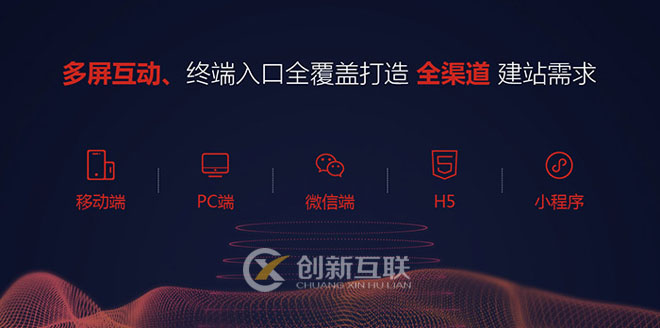UIkit框架(14)自定义标签控制器
自定义UITabBarController子类

在溧阳等地区,都构建了全面的区域性战略布局,加强发展的系统性、市场前瞻性、产品创新能力,以专注、极致的服务理念,为客户提供网站制作、成都网站设计 网站设计制作按需定制网站,公司网站建设,企业网站建设,成都品牌网站建设,全网营销推广,外贸网站建设,溧阳网站建设费用合理。
UITabBarController的tabBar往往不能满足我们的需求
通过自定义UITabBarController子类自定义标签栏是经常采用的方式。
基本步骤:
1)定义UIButton子类作为标签按钮
2)定义模型类,管理每个页面的控制器以及对应标签栏上的数据
3)自定义标签栏
4)定义UITabBarController子类
定义标签按钮
添加两种创建方法:只显示图片和文字图片都显示的
+ (AMTabBarButton *)tabBarButtonWithTitle:(NSString *)title normalImage:(UIImage *)normalImage selectedImage:(UIImage *)selectedImage
{
AMTabBarButton * btn = [AMTabBarButton buttonWithType:UIButtonTypeCustom];
[btn setImage:normalImage forState:UIControlStateNormal];
[btn setImage:selectedImage forState:UIControlStateSelected];
[btn setTitle:title forState:UIControlStateNormal];
[btn setTitleColor:[UIColor grayColor] forState:UIControlStateNormal];
[btn setTitleColor:[UIColor orangeColor] forState:UIControlStateSelected];
btn.titleLabel.font = [UIFont systemFontOfSize:10];
btn.titleLabel.textAlignment = NSTextAlignmentCenter;
return btn;
}
+ (AMTabBarButton *)tabBarButtonWithNormalImage:(UIImage *)normalImage selectedImage:(UIImage *)selectedImage
{
AMTabBarButton * btn = [AMTabBarButton buttonWithType:UIButtonTypeCustom];
[btn setImage:normalImage forState:UIControlStateNormal];
[btn setImage:selectedImage forState:UIControlStateSelected];
[btn setTitle:nil forState:UIControlStateNormal];
return btn;
}修改按钮内部label和p_w_picpathView的位置,重写以下方法即可
- (CGRect)titleRectForContentRect:(CGRect)contentRect - (CGRect)p_w_picpathRectForContentRect:(CGRect)contentRect
如:
- (CGRect)p_w_picpathRectForContentRect:(CGRect)contentRect
{
CGFloat x, y, w, h;
if ( [self titleForState:UIControlStateNormal] == nil ) {
w = h = contentRect.size.height*0.8;
}
else {
w = h = contentRect.size.height*0.45;
}
x = contentRect.size.width/2 - w/2;
y = contentRect.size.height*0.1;
return CGRectMake(x, y, w, h);
}
- (CGRect)titleRectForContentRect:(CGRect)contentRect
{
CGFloat x, y, w, h;
if ( [self titleForState:UIControlStateNormal] == nil ) {
return CGRectZero;
}
h = contentRect.size.height*0.25;
w = contentRect.size.width*0.6;
x = contentRect.size.width*0.2;
y = contentRect.size.height*0.65;
return CGRectMake(x, y, w, h);
}取消按钮点击时的高亮效果:重写highlighted属性的setter方法
- (void)setHighlighted:(BOOL)highlighted {
}定义模型类
管理每个子控制器及标签栏上按钮的数据
@interface AMTabBarItemModel : NSObject @property (nonatomic, copy) UIImage * normalImage; @property (nonatomic, copy) UIImage * selectedImage; @property (nonatomic, copy) NSString * title; @property (nonatomic, strong) UIViewController * viewController; + (instancetype) tabBarItemModelWithNormalImage:(UIImage*) normalImage selectedImage:(UIImage*) selectedImage title:(NSString*) title viewController:(UIViewController*) viewController; @end
定义标签栏
定义一个UIView的子类作为自定义的标签类
设置样式属性,两种样式:只有图片和文字图片都有的
typedef enum {
AMTabBarStyleTitleAndImage,
AMTabBarStyleImageOnly
}AMTabBarStyle;创建方法:
+ (instancetype)tabBarViewWithItemModels:(NSArray *)models tabBarStyle:(AMTabBarStyle)tabBarStyle
{
return [[self alloc] initWithItemModels:models tabBarStyle:tabBarStyle];
}
- (instancetype) initWithItemModels:(NSArray*) models tabBarStyle:(AMTabBarStyle) tabBarStyle
{
if ( self = [super init] ) {
self.tabBarStyle = tabBarStyle;
int i = 1;
for ( AMTabBarItemModel * model in models ) {
AMTabBarButton * btn;
if ( tabBarStyle == AMTabBarStyleTitleAndImage ) {
btn = [AMTabBarButton tabBarButtonWithTitle:model.title normalImage:model.normalImage selectedImage:model.selectedImage];
}
else {
btn = [AMTabBarButton tabBarButtonWithNormalImage:model.normalImage selectedImage:model.selectedImage];
}
[self addSubview:btn];
[btn addTarget:self action:@selector(itemBtnClicked:) forControlEvents:UIControlEventTouchDown];
btn.tag = i;
i++;
}
self.selectedBtn = self.subviews[0];
}
return self;
}
- (void)layoutSubviews
{
[super layoutSubviews];
CGFloat x, y, w, h;
h = self.frame.size.height;
w = self.frame.size.width/self.subviews.count;
y = x = 0;
for ( AMTabBarButton * btn in self.subviews ) {
btn.frame = CGRectMake(x, y, w, h);
x += w;
}
}参数items:模型对象数组
当标签按钮被点击时发送代理方法:
- (void) itemBtnClicked:(AMTabBarButton*) sender
{
self.selectedBtn = sender;
if ( self.delegate && [self.delegate respondsToSelector:@selector(tabBarView:selectedIndex:)]) {
[self.delegate tabBarView:self selectedIndex:sender.tag];
}
}
- (void) setSelectedBtn:(AMTabBarButton *)selectedBtn
{
if ( _selectedBtn != selectedBtn ) {
if ( _selectedBtn != nil ) {
_selectedBtn.selected = NO;
}
_selectedBtn = selectedBtn;
_selectedBtn.selected = YES;
}
}其中selectBtn属性表示当前被选择的按钮
定义UITabBarController子类
添加属性:样式、标签栏、模型数组
@property (nonatomic, assign) AMTabBarStyle tabBarStyle; @property (nonatomic, weak) AMTabBarView * myTabBar; @property (nonatomic, strong) NSArray * items;
添加创建控制器子类的方法:
+ (instancetype)tabBarControllerWithItems:(NSArray *)items tabBarStyle:(AMTabBarStyle)tabBarStyle
{
AMTabBarController * tabBarController = [[UIStoryboard storyboardWithName:@"AMTabBarController" bundle:nil] instantiateInitialViewController];
tabBarController.items = items;
tabBarController.tabBarStyle = tabBarStyle;
NSMutableArray * arr = [NSMutableArray array];
for ( AMTabBarItemModel * model in items ) {
[arr addObject:model.viewController];
model.viewController = nil;
}
tabBarController.viewControllers = [arr copy];
return tabBarController;
}创建自定义的标签栏,添加到tabBar视图上
- (void)viewDidLoad {
[super viewDidLoad];
// Do any additional setup after loading the view.
[self setupTabBar];
}
- (void) setupTabBar
{
AMTabBarView * myTabBar = [AMTabBarView tabBarViewWithItemModels:self.items tabBarStyle:self.tabBarStyle];
self.myTabBar = myTabBar;
[self.tabBar addSubview:self.myTabBar];
self.myTabBar.delegate = self;
}
- (void)viewDidLayoutSubviews
{
[super viewDidLayoutSubviews];
self.myTabBar.frame = self.tabBar.bounds;
}实现自定义标签栏的代理方法,切换页面
- (void)tabBarView:(AMTabBarView *)tabBarView selectedIndex:(NSInteger)index
{
self.selectedIndex = index-1;
}
本文题目:UIkit框架(14)自定义标签控制器
文章来源:http://mswzjz.cn/article/jhppjc.html